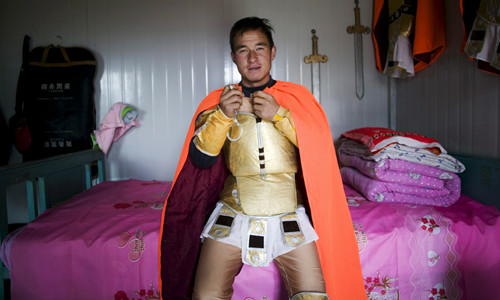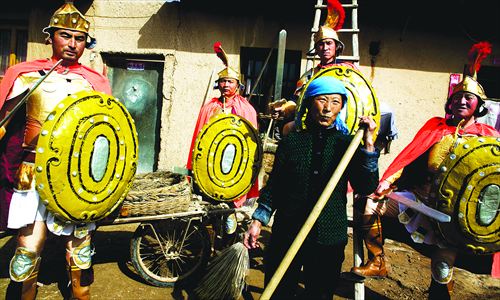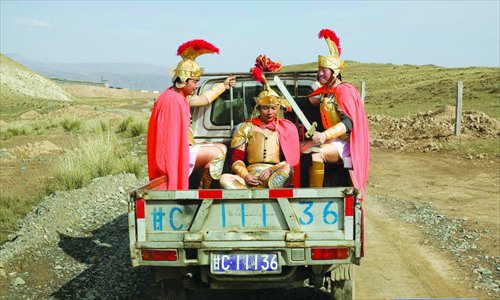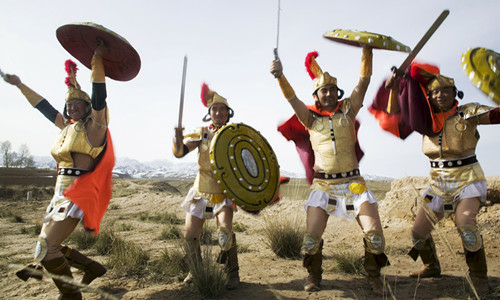Descendants of Rome in the Gobi

A man dressed in Roman style sits on his bed. Photo: IC

Local villagers dressed in armors stand in front of a house. Photo: IC

Villagers, dressed in armor, drive to a show. Photo: IC

Performers pose for tourists in the Gobi Desert. Photo: IC
Those souls living in the village of Liqian, part of Yongchang county of Gansu Province are now thought to be descendants of Roman legionnaires. Scientists speculate this incongruous connection since although they share many genetic characteristics with other Chinese people, the inhabitants of Liqian also often have light-colored eyes and hair.
As early as 1950s, Homer Dubs, a professor of Chinese history at Oxford University first put forward this theory.
In 36 BC, a war between the Huns and the Chinese broke out. Some Hun soldiers were captured and later settled down in the Gobi desert area.
A number of the captured soldiers were Romans fighting as mercenaries for the Huns, according to Dubs, as a small part of a Roman troop was lost around that time. The group marched east to China, then under the rule of the Han Dynasty (206BC-220AD).
In order to appraise this theory, scientists have collected blood samples from 93 villagers and will try and trace their DNA back to Ancient Rome. The findings have not yet been released.
Located on the fringes of the Gobi, the village is over 300 kilometers away from the closest city. However, the study has transformed this remote village.
A huge pillar has been set up at the entrance of the village to attract tourists.
To entertain tourists from home and abroad, a group of male villagers, holding shields and dressed in armor, imitate the defensive "tortoise" phalanx formation, made famous by the well-drilled Roman army.
"In such a remote place, two great civilizations have merged. We are really surprised," Italian visitor Pamela McCourt Francescone told the Xinhua News Agency after watching the show.
Luo Ying, a villager in his late 30s, plays a leading role in the show. With a tall stature, deep-set green eyes and an aquiline nose, he is nicknamed the "Prince of Rome" in the area. "I believe I'm connected to ancient Romans," Luo told Xinhua.
Tourism infrastructure has also sprung up, seeking to tap into the Roman craze. The county now has a Roman hotel while the town has a Roman plaza. The nearby highway has been lined with Roman-like statues to draw attention.
Such a publicity campaign seems to be bearing fruits. Movie and TV production companies from around China have come here to investigate, as have experts in archaeology and genetics.
In November 2010, China and Italy jointly set up a research center on Italian culture in Lanzhou University. One project aims to track the descendants of Roman legionnaires and will record and collect historical resources of Chinese people merging with Romans.
Global Times